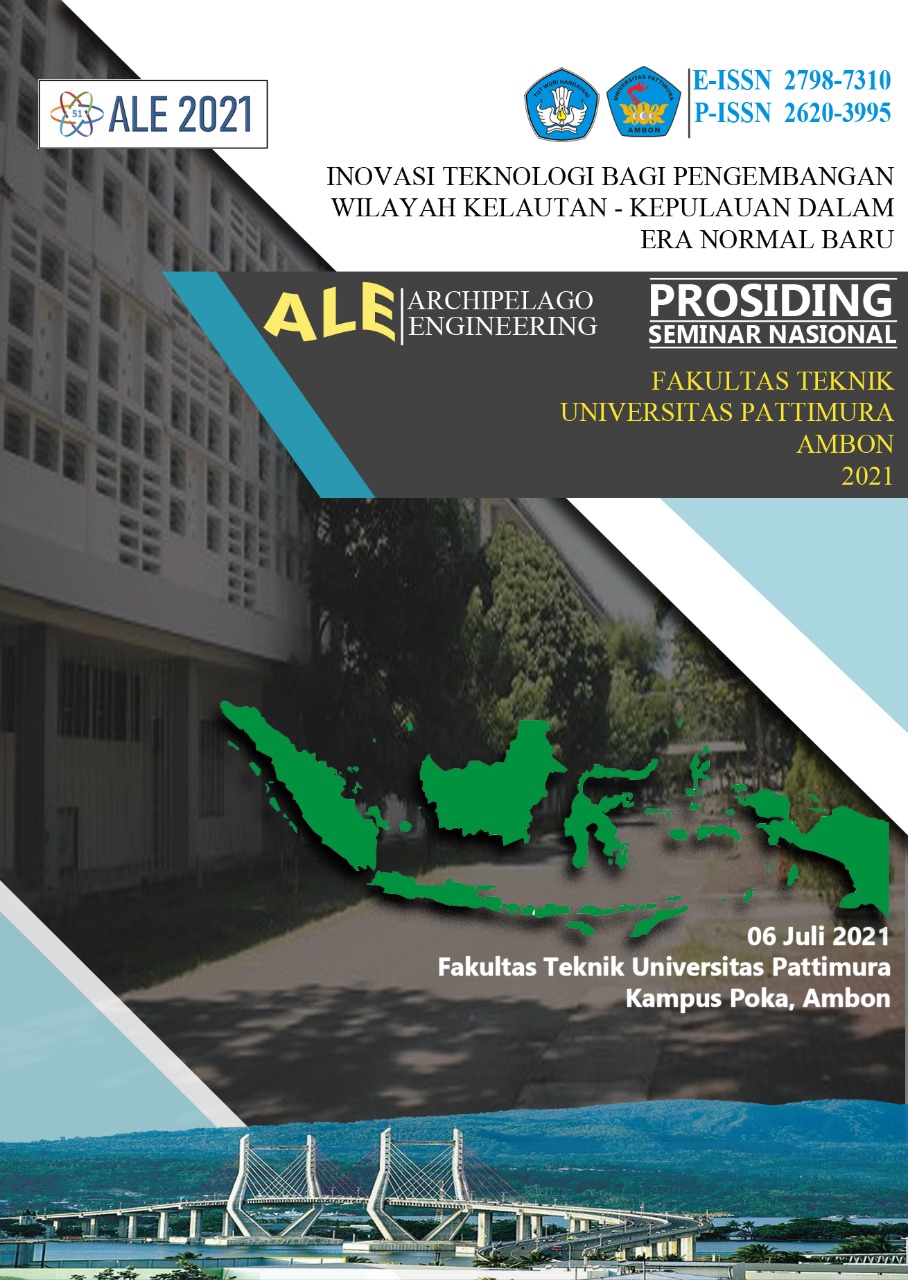PENGEMBANGAN KAPAL PERIKANAN TRIMARAN: KAJIAN MENGENAI KEBUTUHAN TENAGA KAPAL, KEAMANAN DAN KENYAMANAN
Abstract
In general, the fishing fleets operating in Maluku waters are consisted of monohull and trimaran vessels with outriggers managed by local entrepreneurs. Monohull fishing vessels have limited deck space and low transverse stability, whereas trimaran fishing vessels have more deck space and greater transverse stability than monohull fishing vessels, but space is still limited due to their outrigger shape. This study aimed to analyze the development of the trimaran fishing vessel in terms of energy requirements, safety and comfort of the crew during fishing operations. At the beginning of this research, data analysis was undertaken and the basic size of monohull fishing vessels operating in Maluku waters, from this data the shape of the trimaran hull was then designed. Resistance was calculated using CFD, and then the resistance, stability, safety, and comfort of the ship were examined using Maxsurf. The trimaran vessel’s barrier was 8.86% smaller than a monohull and 3.25% smaller than a catamaran. Trimaran vessels consumed more energy than other vessel types. The average trimaran period was 10.5 seconds which met IMO standards and was declared as operationally good.
Downloads
References
[2] R. B. Luhulima and I. K. A. P. Utama, “Selecting Mono- And Multi-Hull Passenger Vessels For Moluccas Waters: Resistance/Powering And Seakeeping Evaluation,†in The 13th International Conference on QiR, 25-28 June 2013. Jogjakarta. Indonesia, 2013.
[3] R. B. Luhulima, I. K. A. P. Utama, Sutiyo, and B. Suwasono, “CFD Analysis into the Correlation between Resistance and Seakeeping of Trimaran Configuration,†in Proceeding of Marine Safety and Maritime Installation (MSMI 2018), 2018, pp. 9–11, doi: 10.23977/msmi.2018.82637.
[4] ITTC, “ITTC-Recommended Procedures and Guidelines: Practical Guidelines for Ship CFD Applications,†2011.
[5] ANSYS, ANSYS CFX-Solver Theory Guide. Canonsburg, PA, USA: Ansys Inc, 2020.
[6] T. Dinham-Peren, C. Craddock, A. Lebas, and A. Ganguly, “Use Of CFD For Hull Form And Appendage Design Assessment On An Offshore Patrol Vessel And The Identification Of A Wake Focussing Effect,†RINAMarine CFD 2008, 2008.
[7] I. K. A. P. Utama, “Investigation of the viscous resistance components of catamaran forms (Ph.D Dissertation),†University of Southampton,UK., 1999.
[8] Y. Ahmed and C. Guedes Soares, “Simulation of free surface flow around a VLCC hull using viscous and potential flow methods,†Ocean Eng., 2009, doi: 10.1016/j.oceaneng.2009.03.010.
[9] J. D. Anderson, Computational Fluid Dynamics: The Basics with Applications. New York, USA. pp. 526-532: McGraw-Hill, 1995.
[10] R. Deng, D. B. Huang, L. Yu, X. K. Cheng, and H. G. Liang, “Research on Factors of a Flow Field Affecting Catamaran Resistance Ralculation,†Harbin Gongcheng Daxue Xuebao/Journal Harbin Eng. Univ., 2011, doi: 10.3969/j.issn.1006-7043.2011.02.002.
[11] E. O. Tuck, D. C. Scullen, and L. Lazauskas, “Wave Patterns and Minimum Wave Resistance for High-Speed Vessels,†24th Symp. Nav. Hydrodyn., 2002.
[12] IMO, “IMO Train the Trainer (TTT) Course on Energy Efficient Ship Operation,†Int. Marit. Organ., no. January, pp. 1–59, 2016.
[13] F. Zouridakis, “A Preliminary Design Tool for Resistance and Powering Prediction of Catamaran Vessels,†Massachusetts Institute of Technology, 2005.
Copyright (c) 2021 Richard B. Luhulima

This work is licensed under a Creative Commons Attribution-ShareAlike 4.0 International License.
An author who publishes in the ALE Proceeding agrees to the following terms:
- Author retains the copyright and grants ALE Proceeding the right of first publication of the work simultaneously licensed under the Creative Commons Attribution-ShareAlike 4.0 License that allows others to share the work with an acknowledgment of the work's authorship and initial publication in this journal.
- Author is able to enter into separate, additional contractual arrangements for the non-exclusive distribution of the journal's published version of the work (e.g., post it to an institutional repository or publish it in a book) with the acknowledgment of its initial publication in this journal.
- Author is permitted and encouraged to post his/her work online (e.g., in institutional repositories or on their website) prior to and during the submission process, as it can lead to productive exchanges, as well as earlier and greater citation of the published work (See The Effect of Open Access).
Read more about the Creative Commons Attribution-ShareAlike 4.0 Licence here: https://creativecommons.org/licenses/by-sa/4.0/.






